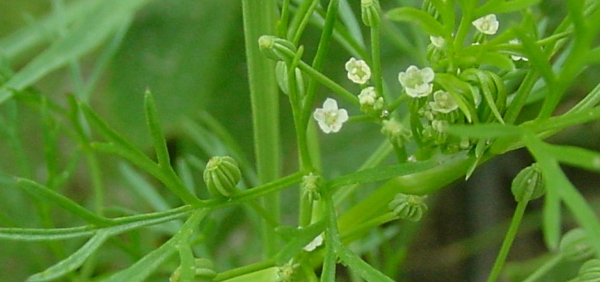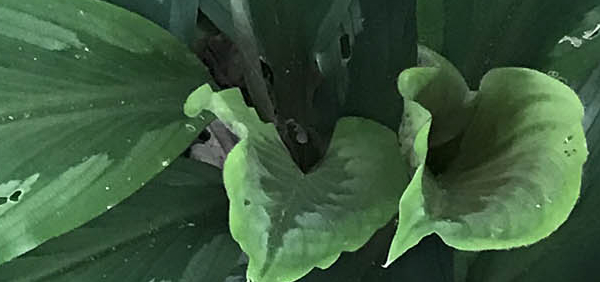dhanya :
 Sali consists of dried root of Oryza sativa Linn. (Fam. Poacem); an annual herb, cultivated throughout India.
Sali consists of dried root of Oryza sativa Linn. (Fam. Poacem); an annual herb, cultivated throughout India.HISTORICAL AND MYTHOLOGICAL REVIEW:
The history of rice domestication is not fully understood. Its wild ancestor, Oryza rufipogon , grows throughout south and southeast Asia, and finds of rice at early sites in the region may derive from harvesting of wild grain, rather than cultivation.
The earliest records of domesticated rice are probably those from the Lower Yangtze river valley of southern China, dating from about 6000 BC. Archaeological and historical evidence suggests that rice spread slower than most crops, in part owing to its specialised need for abundant water. For example, rice did not become an important crop in North America until the late 17th century.
Taxonomical Classification
Kingdom: Plantae - Plants
Subkingdom: Streptophyta
Division: Magnoliophyta - Flowering plants
Class: Magnoliopsida - Dicotyledons
Family: Poaceae
Genus: Oryza
Species: Oryza sativa
Allied species:
Wild rice is produced from an entirely different species of grass,Zizania palustris , and is harvested from wild plants in North America.VERNACULAR NAMES
Sanskrit: dhanya, vrihi, shali, shalibheda, dirghashuka, vrihibheda, cina, dardura, dusaka, hayanaka, jatumukha, kalama, kardama shali, kuruvindaEnglish: rice (husked), paddy (unhusked)
Hindi: चावल Chaval
Urdu: chawal
Telugu: biyam, biyyam, dhanyamu
Bengali: ধান Dhan
Marathi: tandul, bhat, pendha
Konkani: -
Oriya: dhano
Gujarathi: Shalichokha, Bhata, Corava, Damgara, Coke
Tamil: arishi, arisi, nellu
Malayalam: ari, navaranellu, nellu
Kannada: akki, bhatta
Punjabi: Dhan, Jhona
Marwadi: -
Sindhi: -
Kandha: -
Munda: -
Santal: -
Arabic: -أُرْز
Spanish: -: arroz
Mexican: -
Assamese: ধান Dhan
Japanese: -米
Chinese: - 大米 (dàmǐ) (粒, lì)
Deccan: -
Ceylon: -
French: -riz
German: -Reis
Burma: -
Nepal: -चामल
Persian: --برنج
Sinhalese: -සහල්
Tulu: -
Greek: ρύζι
Varities:
Navara has 2 varieties -Definition
-Synonyms
Synonyms in Ayurveda: dhanya, vrihi, shali, shalibheda, dirghashuka, vrihibheda, cina, dardura, dusaka, hayanaka, jatumukha, kalama, kardama shali, kuruvinda-Vrīhi (व्रीहि) is a Sanskrit word for a variety of rice (ṣaṣṭika) which is said to have an inferior quality, according to Caraka in his Carakasaṃhitā sūtrasthāna (chapter 27), a classical Āyurvedic work. The plant Vrīhi is part of the Śūkadhānyavarga group of medicinal plants, referring to the “group of awned grains”. Caraka defined such groups (vargas) based on the dietic value of the plant. Vrīhi is said to be sweet and guru, but has amlapāka and as such aggravates pitta.
Rasa: Kashaya Madhura
Guna: Guru Laghu Snigdha
Veerya: Sheetha
Vipaka: Maduram
Karma: Kaphahara Pittahara Vatahara
Rice is a nutritive, soothing, tonic herb that is diuretic, reduces lactation, improves digestion and controls sweating
The rhizome is taken internally in the treatment of night sweats, especially in cases of tuberculosis and chronic pneumonia
Cultivation:
Rice can be grown in the moist tropics, subtropics and warm temperate zone, succeeding at elevations up to 2,500 metres in tropical areas. It grows best in areas where annual daytime temperatures are within the range 20 - 30°c, but can tolerate 10 - 36°c. Growth ceases below 10°c and plants have no tolerance to frost. It prefers a mean annual rainfall in the range 1,500 - 2,000mm, but tolerates 1,000 - 4,000mm.Requires a wet to inundated soil and a position in full sun. Prefers a pH in the range 5.5 - 7, tolerating 4.5 - 9
Depending upon variety, rice can mature a crop of seed in anything from 60 - 200 days.
There are many named varieties that have been developed from the original wild form and can be grown in a wide diversity of climates and soil types[]. These can be grouped into three main forms:-
Japonica - developed in the cooler regions of the tropics and subtropics, it can also be grown in warm temperate areas. Small to medium plants, they develop few tillers and produce short, roundish grains that tend to be moist and sticky when cooked.
Javanica (often called tropical Japonica) - grown at higher elevations in the tropics, they are tall plants that develop few tillers. They produce long, broad, thick grains.
Indica - the major form of rice, cultivated widely at lower to medium elevations in the tropics and subtropics. Tall plants, they form many tillers and produce slender, short to long grains that are drier and flakier when cooked
There are many different cultivars of each form. Some of these cultivars are starchy and are more suited to use in cakes, soups, pastry, breakfast foods etc. Other cultivars have a sweeter, glutinous texture, these are used for special purposes such as sweetmeats
Within these divisions, the varieties are further defined by whether they have short, medium or long grains. Long grained forms usually have the highest value, though short-grained forms are preferred in many countries.
Propogation:
SeedHarvesting:
The rhizomes are harvested at the end of the growing season and dried for use in decoctionsPhytochemistry:
Brown rice protein contains in g/16g N: 4.6 g isoleucine, 7.9 g leucine, 3.6 g lysine, 5.1 g phenylalanine, 4.7 g tyrosine, 5.3 g total sulfur amino acids, 2.8 g methionine, 3.6 g threonine, 1.4 g tryptophane, and 6.4 g valine (Rutger, 1981). Based on 68–84 analyses, Miller (1958) reports that the straw contains 88.0–93.4% DM (mean 91.5) and, on a zero moisture basis 2.8–6.2% CP (mean 4–2), 0.7–2.3% EE (mean 1.4), 27.6–38.3% CF (mean 35.1), 14.0–20.1% ash (mean 16.9), and 36.6–48.1% NFE (mean 42.4). Han and Andersons analyses (1974) are similar, 0.19 mcal/100 g, 4.5% CP, 1.5% EE, 35% CF, 4.5% lignin, 34.0% cellulose, 42.0% NFE, 16.5% ash, 14.0% silica, 0.19% Ca, 1.2% K, 0.4% Mg, 0.10% P, and 0.10% S.PHARMACOLOGY:
IMPORTANT FORMULATIONS –Parts used for medicinal purpose
Seed, ,Dosage:
50 g. of the drug for decoction.Antidote:
naSubstitute:
-Baby Food Substitute: Boiled Navara can be used as infant food; it’s safe and can give the baby energy. It can also be used as a natural ‘weight gainer’ for infants who are under weight.Adultrants:
Adulteration in rice either adventitiously or deliberately is feasible right from crop harvest to till the grain reaches to the hands of the consumers. The common forms of rice prone to adulteration are brown rice, polished rice, rice flour, rice cake and rice bran oilCommercial value:
-Rice is such an important and widespread source of food, it has gained other meanings. In Asia ‘rice is life’: it is culturally and spiritually crucial to people’s lives. Freshly harvested, unmilled rice grains are used all over Asia in ceremonies and rituals especially those related to fertility. A freshly harvested panicle of rice is often placed over the inside of the house or rice store doorway as a blessing and as protection for the occupants and contents of the house.In Malaysia the ‘Bario’ cultivar is the most prized and expensive rice because of its wonderful aroma and taste. It is only grown in the remote Kelabit highlands of Sarawak in Borneo. Local people call it ‘money rice’.
Morphology:
Root fibrous, thin, cylindrical, 5-15 cm in length and 0.05-0.1 cm thick with a few rootlets, soft, smooth; creamish-brown to greyish-brown.A grass which can grow to over 1 m tall, or to 5 m long in deep water.
Stem and leaves: The stem is upright and composed of a series of joint-like nodes, with a leaf growing from each node.
Seeds: The seeds (or grain) grow on branch-like spikes which arch over. The grain is the most economically important part of the rice plant, and its endosperm is the final product consumed.
Histology:
Root – Shows single layered epidermis consisting of thin-walled, rectangular cells with a few unicellular root hairs; exodermis 1-2 layered, composed of thick-walled, sclerenchymatous cells; cortex differentiated into three zones; outer 5-8 and inner 2-3 layered, both consisting of round to oval, parenchymatous cells with intercellular spaces; middle zone consisting of radially elongated, parenchymatous cells having very large air-spaces; endodermis and pericycle both single layered; xylem and phloem form equal number of bundles arranged alternately with each other; centre occupied by a small pith composed of polygonal, thick-walled, sclerenchymatous cells.Geographical distribution:
Three diversity centers were detected for isozyme variation including South Asia, China and Southeast Asia Oryza sativa is cultivated in Europe, Africa, tropical and temperate Asia, Australia, and North and South America.ECOLOGICAL ASPECT:
Ranging from Cool Temperate Steppe to Wet through Tropical Very Dry to Wet Forest Life Zones, rice is reported to tolerate annual precipitation of 4.2 to 42.9 dm (mean of 85 cases = 15.2), annual temperature of 8.4 to 27.8°C (mean of 85 cases = 23.0), and pH of 4.3 to 8.7 (mean of 72 cases = 6.3) (Duke, 1978, 1979). According to Rutger (1981), fertile soils are desired, with pH between 5 and 7.5. Rice is a tropical, subtropical and warm temperate crop, growing best where summer temperatures of 24–25°C prevail and in full sun. Rice grows as far north in Japan as 42°N and as far south in Queensland as 23°S. On the south side of the Himalayas rice is grown to 2,400 m. Rice mostly cultured on the humid coastal lowlands and deltas of the world. Growth arrested below 10°C; rice exhibits little or no frost tolerance. Temperatures of 0.5 to 5°C are lethal after 24 hours. Aquatic rice may require a dependable supply of fresh, slowly moving water, at temperature of 21–29°C. If rainfall is less than 125 cm annually, irrigation is used to make up deficit. Rice is said to require the equivalent of 8–10 dm during its growing period. Crop is salt tolerant at some stages of growth; during germination but not seedling stages rice has even been grown to reclaim salty soils. Terrain should be level enough to permit flooding, yet sloped enough to drain readily. Soil should be of a fine texture that holds water or should have a subsoil which holds water with little seepage. Friable loam overlying heavy clay, as in many coastal and delta areas, is ideal (Reed, 1976). Although most rice cvs are shortday, there are photosensitive and long day cvs.Plant conservation:
-General Use:
Rice is a staple food and used by many ways as under:Therapeutic Uses:
Stanyaksaya, MutrakrcchraSystemic Use:
Rice is a nutritive, soothing, tonic herb that is diuretic, reduces lactation, improves digestion and controls sweatingThe seeds are taken internally in the treatment of urinary dysfunction. The seeds, or the germinated seeds, are taken to treat excessive lactation. The germinated seeds are used to treat poor appetite, indigestion abdominal discomfort and bloating
The grains are often cooked with herbs to make a medicinal gruel
The rhizome is taken internally in the treatment of night sweats, especially in cases of tuberculosis and chronic pneumonia. The rhizomes are harvested at the end of the growing season and dried for use in decoctions
Administration:
-A poultice of rice may be used as a substitute for one of linseed meal, and finelypowdered rice flour may be used, like that of wheat flour, for erysipelas, burns, scalds, etc.Pharmacological:
Clinical trials:
Research:
Precautions:
Toxicity studies:
Arsenic is found in a wide variety of rice and rice products, sometimes at levels that are higher than safe limits set for drinking water, new tests confirm.Use in other system of medicine:
CONCLUSION:
Decoction of O. sativa possesses cooling, epistaxis, and diuretic properties, and is used for the treatment of dysuria and various inflammatory diseases. Ashes of the straw is used for the treatment of wounds.6 Gruel of O. sativa is used for treating diarrhea, dysentery, bowel complaints, and indigestion.7 Powder is applied topically to cure itching. It is reported that the plant possessed antiinflammatory property. Ethyl alcohol and butanol extract obtain from leaves possessed antioxidant propertyAyurvedic Formulations:
Common Ayurvedic Formulations of dhanya with their IndicationsBrahma Rasayana
KEY WORDS: dhanya ,Oryza sativa Linn., Oryza plena Chowdhury ,sali
- » Classification and names of dhanya
- » Synonyms and definitions of dhanya
- » Drug Properties of dhanya
- » Chemical Constituents of dhanya
- » Standardization of dhanya
- » Parts used and Dosage of dhanya
- » Morphology and Histology of dhanya
- » Distribution and Conservation of dhanya
- » Cultivation of dhanya
- » dhanya in the market
- » Medicinal Uses of dhanya
- » Researches and clinical trails of dhanya
- » dhanya in other sytems of medicine
- » Ayurvedic formulations with dhanya
- » Images of dhanya












